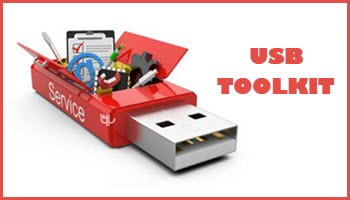
- Tech geek tools to create on a usb how to#
- Tech geek tools to create on a usb install#
- Tech geek tools to create on a usb portable#
- Tech geek tools to create on a usb software#
Once you’ve selected the correct ISO file, tap on Create.At the third step, click on Browse and navigate to the directory of the ISO file and then select the file.We have used the Manjaro Linux distribution here. In step 2, select the tool or OS you want to add to the USB drive.Make sure to select the correct flash drive to prevent data loss. Simply click on the drop-down menu and select your USB drive. The first step is to select the USB drive.Click on I Agree to enter the application.Launch the YUMI.exe program on your Windows PC.Plug into your USB drive to your PC (preferably with more than 16GB storage).YUMI will erase and format the flash drive.įinally, follow the steps given below to create a multiboot USB for Windows using YUMI. Note: Backup the files on your USB drive before beginning the process.

Tech geek tools to create on a usb how to#
Of course, it would be a bonus if you know how to change the BIOS settings. So download the version based on your BIOS settings. However, the BIOS mode can work even with a USB drive that is NTFS formatted.

It’s worth noting that the UEFI version uses GRUB2 for both UEFI and BIOS booting. There are two versions of YUMI to download - the legacy YUMI tool and YUMI UEFI. Steps to use YUMI to create multiboot USBĭownload YUMI Multiboot USB creator. So if that sounds interesting, follow the guide below to create multiple bootable ISO files with YUMI. You can use YUMI to extract all 5 distros ISOs and test them without installing them on your PC. Moreover, if you’re looking for a Linux distro, check out the top 5 Linux distros you must use. Fortunately, YUMI is an easy tool to use and gets the job done quickly. Hence, you can use this to recover your system or clone a disk as well. Moreover, you can also load anti-virus utilities, recovery software, diagnostic tools, and other bootable software. Let’s check out how we can create a multiboot USB for Windows using YUMI multiboot USB creator tool. Therefore, this will allow you to load several Linux distros on a single drive for testing. With YUMI or Your Universal Multiboot Installer, you can create multiple bootable ISOs on a USB flash drive. However, with most programs currently available, you can only add one ISO file. It'll help you a lot in the long run.Creating a bootable USB drive is fairly easy. If you get into a habit of cleaning others computers, keep an image of this stick somewhere on your PC and re-image it after using it.
Tech geek tools to create on a usb software#
You can add more things like the latest video card drivers, Windows Service Packs, Unreal Tournament and other vital software to fill it up if needed. The above is about 800-1000mb put together (depending on which software you pick).
Tech geek tools to create on a usb portable#
Portable apps: Firefox/Chrome, 7-Zip, Notepad++, SumatraPDF.Free antivirus installer(s) of your choice: MSE, Avira, Avast, AVG and/or ClamAV.(it's probably easy to add this as a boot option into SystemRescueCd, left as an exercise for the reader etc.)

You can press shift-f10 while the Windows 7 setup tool is running to get a cmd.exe window or just use the builtin recovery tools. Windows 7 installation files apart from install.wim this allows you to boot to Windows instead of SystemRescueCD after running a simple command in Windows.
Tech geek tools to create on a usb install#


 0 kommentar(er)
0 kommentar(er)
